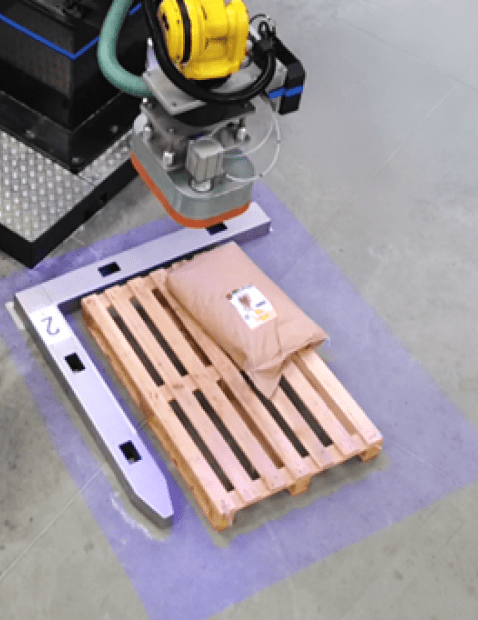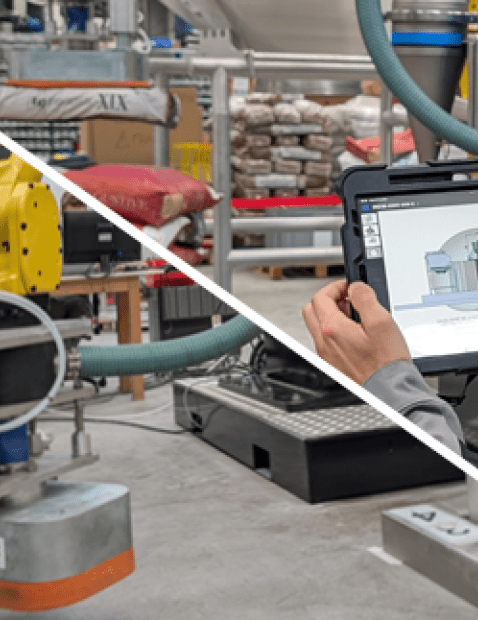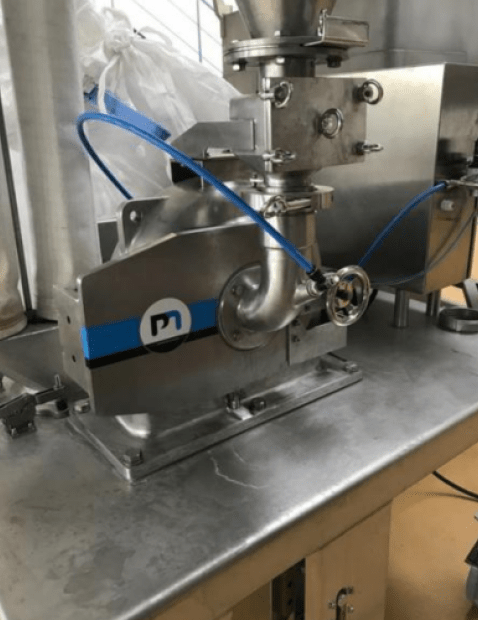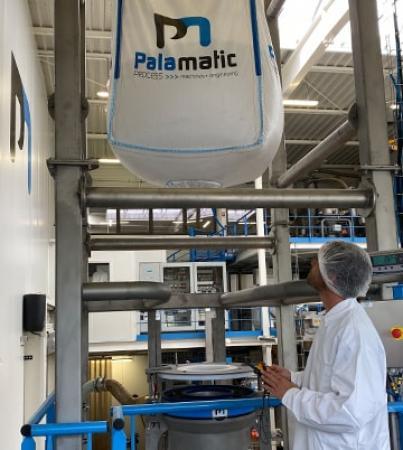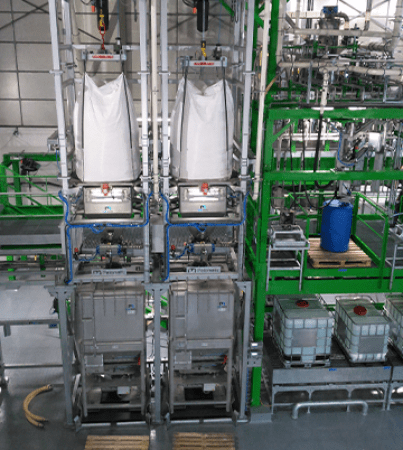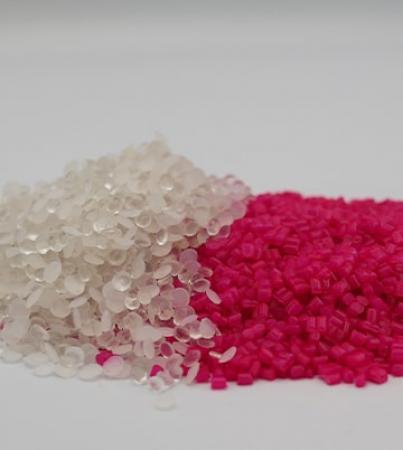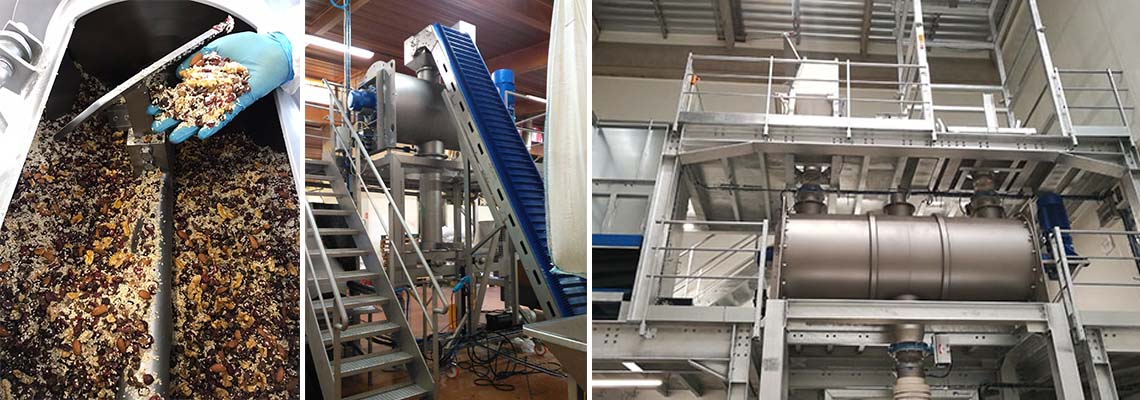
Manufacturers in the food and beverage, nutraceutical, bakery and chemical industries often require the mixing of various raw ingredients to add value to their final product. Therefore, in many applications, blending and mixing is one of the most important steps in an industrial process. For manufacturers of prepared instant mixes, spices and flavorings, it is important to be able to blend a variety of ingredients with accurate repeatability.
It is therefore essential to choose the industrial mixer that will meet the expectations of this type of business sector: food safety, hygiene, appearance, precision, homogenisation, etc.
1. Continuous vs. Batch Mixing
Continuous mixing is a process by which raw ingredients are constantly flowing through the mixer by means of a controlled feed rate. The materials are mixed for a short time as they travel through the mixer body, before discharging at the end of the unit through the discharge outlet. The main advantage to continuous mixing is that is provides a higher throughput rate and uses less energy when compared to batch mixers. Furthermore, continuous mixers are typically used for dry materials only, but if viscous materials or slurries are required, it’s possible to use a continuous method with careful and custom design.
On the other hand, batch mixing is when a mixer is loaded with all the ingredients required for the recipe and blended for a longer period of time. Once the mix cycle is finished, the mixer outlet is opened by either a plug valve or butterfly valve and the material is emptied from the mixer into the downstream process. Batch mixing gives a greater degree of control over the mix with higher precision on the recipe required.
Further considerations for determining if batch or continuous is best for your process include:
- The number of ingredients to mix. Continuous mixers can typically only handle 2 to 3 ingredients at most to produce a consistent blend.
- Control and precision of the recipe. Typically, this involves recipes where consumers are tasting the product, such as spices and flavorings. Batch processes allow for a greater degree of control over the precision and repeatability of the blended recipe.
2. Mixing Time and Mechanics
As previously mentioned, continuous mixers are best at producing higher blended volumes in a shorter time. But that does not necessarily mean they can achieve the desired result in a short time. Continuous mixers cycle time is typically between 30 seconds to 4 minutes at most. If your recipe requires a greater degree of precision and longer mix times to ensure repeatability in the blend output, as well as consistency in taste profile, then batch is the way to go. Batch mixers will allow for longer mix cycles with repeatable outcomes.
Furthermore, the type of mixer is also important to consider when blending ingredients.
Ribbon mixers are the most versatile and widely used type of powder blending machine in the market. They often are most commonly used for dry mixing but can also be used for applications involving coating a dry particle with a liquid ingredient, or even particle absorption of a liquid addition.

Plow or blade mixers provide excellent results in both speed and consistency of powder mixtures for batch processes. Due to their high-performance speed, they are among the fastest mixers with an average mixing time of 1 to 4 minutes. Another advantage is this is a no dead zone mixing equipment.

Do you need advice on choosing your industrial mixer?
I am available to discuss the subject in person.
Guillaume, powder expert
Paddle Mixers use rotating paddles to divide and blend sequentially the mass of product and generate a quick and intense movement of each particle through the mixing chamber (convection). They also offer better performance when the dry materials are being mixed with liquid to produce a viscous or slurry type of blend. When producing a viscous blend, the materials tend to stick to or wrap around the blending media of ribbon and plow mixers. But with paddle mixers, this type of buildup effect typically does not affect the agitators as much. Furthermore, they can also be started under full load whereas ribbon and plow mixers cannot surpass an approximate fill level of 70% capacity to produce a consistent blend.
Paddle mixers offer smooth, continuous mixing and are regularly used for materials such as spices and flavours. They are ideal for obtaining a homogeneous and precise mixture without altering the product.
3. Performance Capabilities
Based on the characteristics of your materials, you will also want to consider how the different types of mixers behave and what affect they will have on your recipe. Plow mixers can produce a blend in the shortest amount of time. This is due in large part to the plow blades that can rapidly rotate and produce mixed results with high speeds. In this instance, it can be useful to use a plow mixer if you want to create a de-agglomeration effect on your materials. If they tend to form lumps in the production process, the plow mixer will create more of a fluidizing effect to keep the material particle range consistent. However, if your material is friable or heat sensitive, plow mixers are most likely not the best choice. This brings us to ribbon blenders, which use an inner and outer helical coil (ribbons) to move the product both outward towards the sides of the mixer body, as well as inward creating a folding action. For materials that are heat sensitive or require a gentle mixing action, ribbon blenders are the best. In the majority of food applications, ribbon blenders are typically the preferred choice because they can preserve the integrity of the product without causing any chemical or compositional changes.
Considering food processing plants, specifically those that deal with pre-mix products, we need to look at common process requirements for blending spices and flavorings:
- Taste profile needs to be consistent and repeatable.
- Easy to clean
- Gentle mixing action to preserve the chemical composition of the ingredients
Because we know these 3 main criteria will be important to manufacturer’s producing instant mixes, spice blends and flavorings, we can determine that in most cases a batch ribbon blender will be the preferred type of mixer. The gentle mixing action of the ribbons will preserve the integrity of the blend and the batch process will give a greater degree of control over the final mix.
In order to decide which powder mixer is best for your process, contact one of our sales experts. Palamatic Process has 30 years of powder handling experience and together, we can present your production line with a solution that will exceed expectations!














